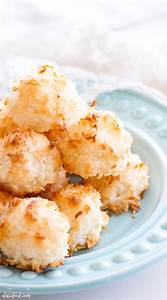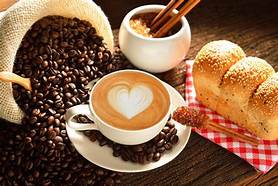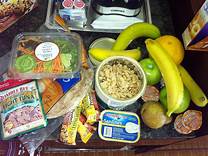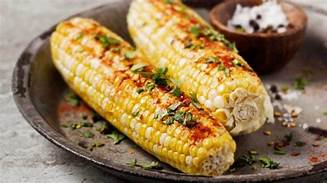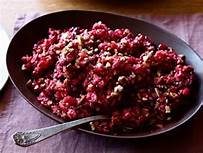Importance of well balance diet
All food contains all of the nutrients we need to be healthy, it is necessary to eat various foods in sufficient amounts. A good diet will include many different foods, and sufficient in quantity and quality to meet an individual’s need for food energy and other micro nutrients.
RHUBARB
Typical serving size:
1 cup (122 g)HOW IT HARMS
Poisonous (leaves) Mineral absorption Kidney stones GallstonesWHAT IT HEALS
Cancer High blood pressure Rhubarb is botanically a vegetable, although everyone calls it a fruitIt is available in frozen and canned forms, but most people prefer to cook the fresh stalks
One cup of fresh diced rhubarb yields a mere 26 calories, provides 10 mg of vitamin C, 350 mg of potassium, and 2 g of fiber
A popular springtime pie filling often combined with strawberries, rhubarb can also be made into preserves or stewed to make a sauce to complement poultry, meats, pork, and desserts
QUICK TIP:
Create a sugar-free compote For each cup of chopped rhubarb in a nonaluminum saucepan, mix in ¼ cup golden raisins and ¼ cup pineapple juiceSimmer for about 10 minutes, or until softened
Serve warm or cold
Health Benefits
May prevent cancerResearchers in Great Britain discovered that baking rhubarb for 20 minutes releases high levels of anti-cancerous polyphenols
Scientists are now hoping to use the results to study the effect that rhubarb’s antioxidants may play in treating leukemia
Keeps cells healthy
The antioxidant vitamin C in rhubarb helps to prevent harmful free radicals that are produced by the body’s digestive process and by exposure to tobacco smoke, radiation, and other environmental toxins
Helps control blood pressure
The potassium in rhubarb lessens the effects of sodium in raising blood pressure
Health Risks
PoisonousIf eaten, rhubarb leaves (not the stalks) cause oxalic acid poisoning
Symptoms can include difficulty breathing, vomiting, and diarrhea
It would take a great deal of leaves for the poisoning to be fatal
The rhubarb stalks are perfectly safe to eat
Mineral absorption
Even though one 1 cup (244 g) of fresh diced rhubarb contains more than 100 mg of calcium, it is not considered a good source of this mineral
That’s because rhubarb also contains oxalic acid, which blocks the absorption of calcium needed for healthy bones and teeth
Kidney stones or gallstones
Large amounts of rhubarb should be avoided by those who have a tendency to develop oxalate-containing kidney stones or gallstones
Allergies
Buying Tip
s
Storing Tips
Use within 1 week
Pack the pieces into a sealed plastic container and freeze for up to 1 year
